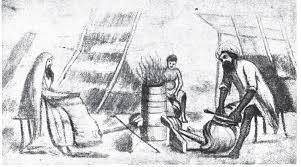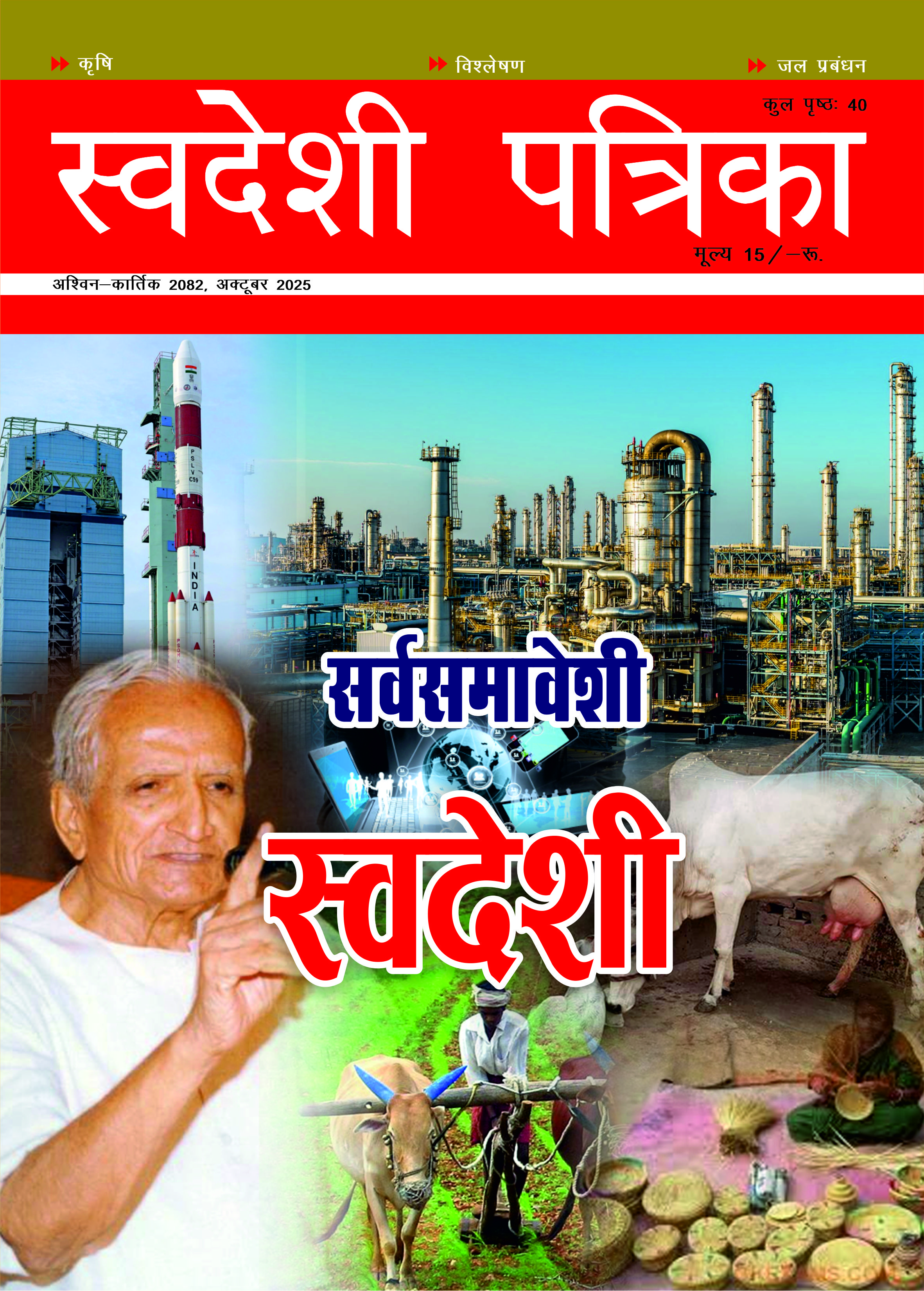
History of Metallurgy in Ancient India (Part-5)
The trade routes between India and the mediterranean civilizations of Greece and Egypt facilitated the exchange of chemical knowledge. Indian merchants travelled along the silk road and the maritime routes, carrying spices, textiles, and other valuable goods. — Prof. Nandini Sinha Kapur
Ancient Indian Chemical Practices
Ancient India was home to a rich tradition of scientific knowledge and exploration, including in the field of chemistry.The ancient Indians were pioneers in various chemical practices, making remarkable advancements in fields such as metallurgy, mining, dyes and pigments, and perfumery.Let’s delve into each of these areas to explore the fascinating history of chemistry in ancient and medieval India.
Experiments In Metallurgy and Mining:
Ancient Indians were skilled metallurgists who conducted extensive experiments to extract metals from ores and develop innovative techniques in metalworking.They discovered the process of extracting zinc by heating zinc ore and collecting the condensate, which was a significant achievement considering the complexity involved.Indians also displayed expertise in mining, with evidence of ancient mining practices in various regions of the subcontinent.They developed sophisticated techniques for mining, such as extracting minerals from deep mines and using hydrological methods to control water flow in the mines.
Development of Dyes and Pigments:
Ancient India had a vibrant textile industry, and the development of dyes and pigments played a crucial role in enhancing the quality and variety of fabrics produced.Indians used a wide range of natural substances to create dyes and pigments, including plants, minerals, and even insects.Various plant sources like turmeric, indigo, and madder were utilized to create vibrant and long-lasting dyes.Minerals such as ochre and cinnabar were used to produce different shades of red and yellow.Their mastery in dyeing techniques led to the creation of exquisite textiles that were highly prized in international trade.
Advancements in Perfumery and Cosmetic Preparations:
Perfumes and cosmetics held great importance in ancient Indian culture, not just for aesthetic purposes but also for their therapeutic properties.Indians excelled in the art of perfumery, developing complex methods to extract aromatic substances from flowers, bark, and other plant parts.They created perfumes using distillation techniques and also utilized solid perfumes in various forms.Indian chemists and physicians formulated a wide range of cosmetic preparations, including ointments, powders, and oils for skincare and hair care.Some of these formulations are still used today, highlighting the timeless nature of ancient Indian knowledge in this field.The ancient Indians’ contributions to chemistry were remarkable, with their advancements in metallurgy, mining, dyes and pigments, and perfumery leaving a lasting impact on the scientific world.These achievements not only fostered cultural and economic growth but also laid the foundation for future discoveries and inventions in the field of chemistry.
Contributions of Ancient Indian Scholars
Ancient and medieval India was a hub of intellectual and scientific advancements, particularly in the field of chemistry. The contributions made by the ancient Indian scholars played a crucial role in shaping our understanding of the world. In this section, we will explore the noteworthy discoveries and achievements of three brilliant minds: acharya Kanad, acharya Nagarjuna, and acharya Charaka.
Discoveries By Acharya Kanad
Acharya Kanad, also known as Kashyap, was a prominent sage and philosopher who made remarkable contributions to the field of chemistry. His work primarily focused on understanding the composition and properties of matter.
Here are some noteworthy discoveries by acharya Kanad –
Existence of atoms: Acharya Kanad’s groundbreaking concept of “anu” introduced the idea of indivisible particles, which he called atoms. He hypothesized that everything in the universe is made up of these tiny, indestructible particles.
Law of conservation of mass: Acharya Kanad proposed that matter cannot be created or destroyed; it can only change form. This principle is now known as the law of conservation of mass and is a fundamental concept in chemistry.
Acharya Nagarjuna And the Concept of Rasashastra
Acharya nagarjuna, a renowned scholar and philosopher, made significant contributions to the field of chemistry through his work on rasashastra.
Rasashastra is an ancient branch of ayurveda that focuses on the preparation of medicinal compounds using minerals, metals, and other substances.
Here are acharya Nagarjuna’s notable contributions –
Formulation of ayurvedic medicines: Acharya Nagarjuna systematized and documented the preparation of various ayurvedic medicines using Rasashastra principles. His extensive knowledge helped in the development of effective remedies for various ailments.
Processes of purification and transformation: Acharya Nagarjuna devised innovative techniques for purifying and transforming minerals and metals to enhance their medicinal properties. His methods included calcination, pulverization, trituration, and various forms of heat treatment.
Acharya Charakaand the Formulation of Ayurvedic Medicine
Acharya Charaka, a distinguished physician and scholar, played a pivotal role in formulating the principles and practices of ayurvedic medicine.
Here are some of acharya Charaka’s notable contributions –
Compilation of Charakasamhita: Acharya Charaka authored the CharakaSamhita, one of the most comprehensive and influential texts in the field of ayurveda. This text covers a wide range of medical topics, including diagnosis, treatment, and the use of herbs and minerals in therapy.
Classification of diseases and herbs: Acharya Charaka classified diseases based on their etiology and symptoms, providing a systematic approach to understanding and treating ailments. He also categorized medicinal plants based on their therapeutic properties, which served as a foundation for ayurvedic medicine.
The contributions of acharya Kanad, acharya Nagarjuna, and acharya Charaka have significantly enriched the field of chemistry and medicine in ancient & medieval India.
These remarkable scholars not only laid the groundwork for scientific advancements but also played a vital role in promoting the holistic healing system of ayurveda.
Exchange of Chemical Knowledge with Other Civilizations
Chemistry has a rich history in ancient and medieval India, with the exchange of knowledge being a crucial aspect of its development.
In this section, we will explore the trade routes and knowledge exchange between India and Greece and Egypt, the influence of Greek and Arab scholars on Indian chemistry, and the impact of Indian chemical knowledge in the Arab world.
Trade Routes and Knowledge Exchange with Greece and Egypt:
The trade routes between India and the mediterranean civilizations of Greece and Egypt facilitated the exchange of chemical knowledge. Indian merchants travelled along the silk road and the maritime routes, carrying spices, textiles, and other valuable goods. Along with these commodities, they also transported knowledge related to chemistry and other fields. The Indians learned about Greek and Egyptian contributions to chemical knowledge, including theories and laboratory techniques. Similarly, the Greeks and Egyptians gained insights into Indian practices, such as medicinal preparations and the use of natural resources.
(Author acknowledges hhttps://historyrise.com for the above information.)


